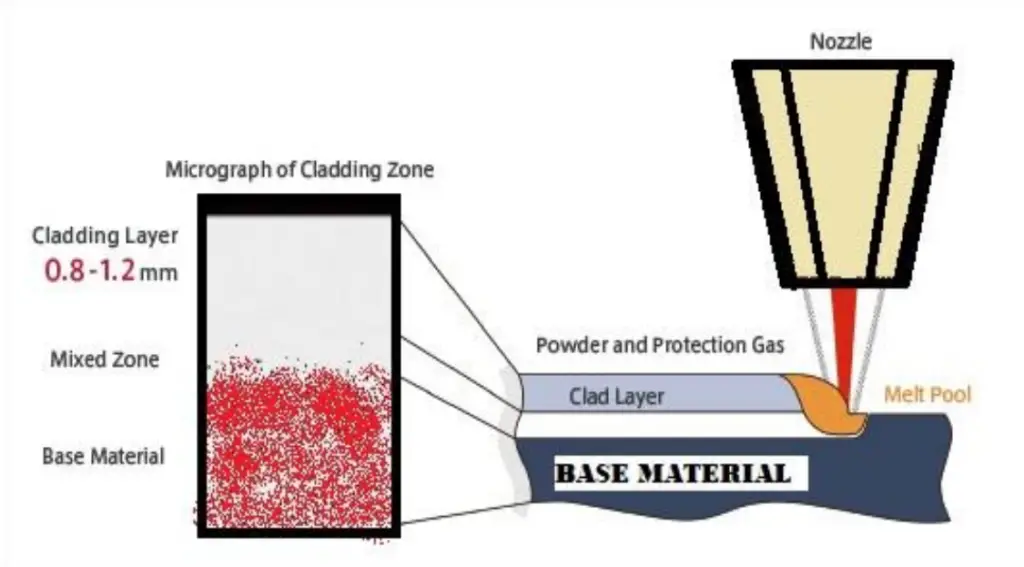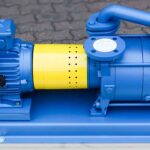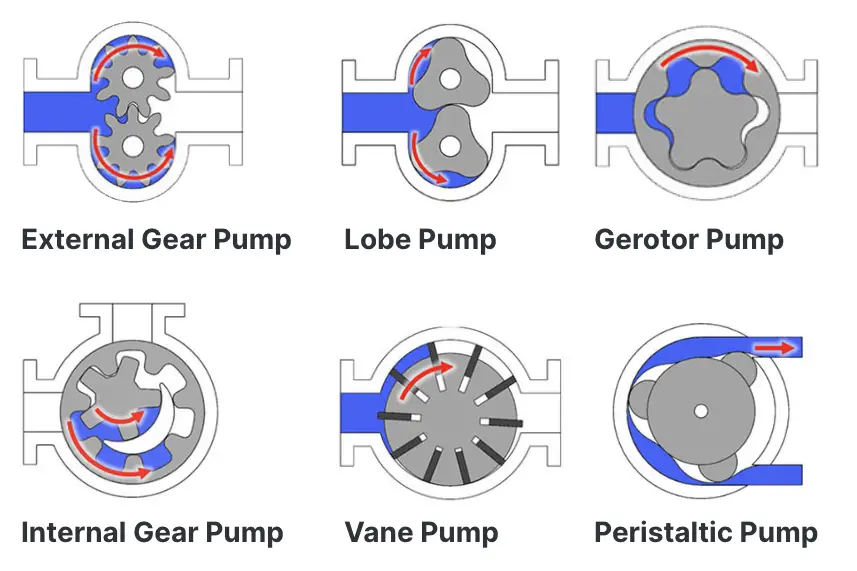The pipe cladding is a critical process used for enhancing the durability and performance of piping systems. Various industries, including the oil and gas industry, petrochemicals, water supply, food processing, and mining, make use of the cladding process in piping. This treatment is valuable for protecting materials from harsh conditions—whether environmental, service-related, or due to wear—while also enhancing their performance to meet specific mechanical and metallurgical requirements. This comprehensive guide explores the nuances of pipe cladding, including its purpose, types, applications, and the various methods used in its application.
What is Pipe Cladding?
Pipe cladding is the process of applying a layer of material—known as the cladding material—onto the surface of a pipe. This layer serves multiple purposes, including improving corrosion resistance, enhancing thermal insulation, resisting deterioration, and providing a protective barrier against physical damage. The cladding material is typically applied to the exterior or interior of a pipe and can vary based on the requirements of the application and the operating environment.
Cladding can be defined as a common surface modification technique that involves partially melting the substrate while fully melting externally supplied powders. This process enhances and encapsulates the key characteristics of selected materials to achieve a desired thickness on the surface. Cladding is known for its strong metallurgical bonding and minimal dilution of the base material. During the process, a small area of the substrate melts, creating a robust connection with the molten, wear-resistant material, typically in powder form.
The demand for effective surface coating solutions has surged since the industrial revolution, leading to various methods such as laser-based cladding, TIG cladding, microwave cladding, PVD, hybrid cladding, and CVD.
The Importance of Pipe Cladding
Pipes are essential for moving fluids and gases across long distances, but they often face tough conditions both above and below ground. Elements like corrosive soil, chemical reactions, high pressures, and temperature changes can gradually weaken and corrode the pipe material.
This deterioration not only threatens the structural integrity of the pipes but also presents major safety and environmental hazards. Here comes the importance of pipe cladding. The primary functions of pipe cladding are to:
- Enhance Corrosion Resistance: Pipes are often exposed to harsh environmental conditions, including moisture, chemicals, and extreme temperatures. Cladding materials like stainless steel or alloys can protect pipes from these corrosive elements, significantly extending their lifespan.
- Improve Thermal Insulation: In industries where temperature control is crucial, such as in the oil and gas sector, cladding materials can provide effective thermal insulation. This helps in maintaining the desired temperature within the pipes and reduces energy loss.
- Increase Mechanical Strength: Cladding can reinforce the structural integrity of pipes, making them more resistant to wear, impact, and pressure. This is particularly important in high-stress applications where mechanical strength is essential.
- Enhance Aesthetic Appeal: In some cases, pipe cladding is used for aesthetic purposes, giving the pipes a cleaner and more uniform appearance, especially in visible areas.
Types of Pipe Cladding Materials
The choice of cladding material depends on various factors, including the operating environment, the type of fluid transported, and cost considerations. Here are some commonly used cladding materials:
- Stainless Steel cladding: Known for its excellent corrosion resistance and strength, stainless steel is a popular choice for cladding in many industrial applications. It is particularly effective in environments with high temperatures and corrosive substances.
- Alloy Materials cladding: Special alloys, such as Inconel or Monel, are used for their exceptional resistance to extreme conditions. These materials are often employed in specialized industries like aerospace and chemical processing.
- Polyethylene cladding: For applications requiring resistance to chemicals and moisture, polyethylene cladding provides a cost-effective solution. It is commonly used in the water and wastewater industry.
- Ceramic cladding: Ceramic cladding is known for its hardness and resistance to high temperatures. It is often used in environments where abrasion and extreme heat are concerns.
- Rubber and Elastomers cladding: These materials are used for their flexibility and impact resistance. Rubber cladding is common in applications where the pipes are subject to frequent vibration or movement.
- Composite Materials cladding: Advanced composite materials, which combine different substances to achieve specific properties, are gaining popularity for their high strength-to-weight ratio and corrosion resistance.
Types of Pipe Cladding
There are two major types of Pipe cladding; Metallurgical cladding and mechanical cladding. Metallurgical cladding has various sub-groups as shown in Fig. 1 below:

Roll Bonding
In roll bonding, two or more layers of different metals are meticulously cleaned and passed through rollers under significant pressure to achieve bonding. This pressure deforms the metals, reducing the overall thickness of the clad material. Heat may also be applied, particularly when the metals lack sufficient ductility. One practical application involves painting a pattern on one sheet; only the exposed metal surfaces bond, allowing the unbonded areas to inflate when heated, as the coating vaporizes. This method is commonly used to manufacture heat exchangers for refrigeration systems.
Explosive Cladding
Explosive cladding utilizes the detonation of a chemical explosive sheet to generate the pressure needed to bond two metal layers. This technique avoids creating a heat-affected zone at the bond interface. The explosion travels across the sheet, effectively expelling impurities and oxides between the layers. Large pieces, measuring up to 4 x 16 meters, can be produced, making this process ideal for cladding metal sheets with corrosion-resistant layers.
Laser Cladding
Laser cladding is a widely used surface engineering technique that melts the coating material and a thin layer of the substrate with a scanning laser beam to create a durable surface layer. The primary objective is to apply a thin interfacial coating of metals or alloys on a substrate with minimal dilution, enhancing wear and corrosion resistance. This technology enables the development of a variety of composite and complex coatings. Common methods include thermionic-assisted spraying, plasma and laser melting of galvanic coatings, and the application of diffusion layers or pastes.
Laser technology can alter the surface characteristics of various materials, including light metals, different types of steel, and cast iron. In the laser cladding process, a specially designed nozzle combines a laser beam with powdered granules, facilitating the creation of coatings with unique properties. Industry utilizes 5-axis CNC laser processing centers to apply coatings precisely where needed. Fig. 2 below explains the typical laser cladding process:

Research often focuses on wear resistance, and laser cladding technology is particularly beneficial for producing wear-resistant coatings on agricultural tools. Since these tools typically experience wear in specific areas, it is unnecessary to coat the entire surface, making targeted enhancements a cost-effective solution. Laser cladding presents a viable alternative to more energy and time-intensive methods, such as diffusion.
Methods of Applying Pipe Cladding
There are several methods for applying cladding to pipes, each with its advantages and specific applications. The choice of method depends on factors like the type of cladding material, pipe dimensions, and the required quality of the finish.
- Weld Overlay: This method involves welding a layer of cladding material onto the surface of the pipe. It is commonly used with metals and alloys. The process is highly customizable and can be adjusted to achieve different thicknesses and properties.
- Hot Bonding: In this technique, the cladding material is heated and then bonded to the pipe surface. This method is often used for thermoplastic materials, such as polyethylene, and provides a strong, durable bond.
- Cold Bonding: Cold bonding involves applying cladding material without heat, typically using adhesives or bonding agents. This method is used for materials like rubber and elastomers and is suited for applications where heat might damage the cladding or pipe.
- Spray Coating: This method involves spraying a liquid cladding material onto the pipe surface. It is often used for ceramic or polymer coatings and provides a uniform and smooth finish.
- Extrusion Coating: In this process, the cladding material is melted and then extruded over the pipe. It is commonly used for thermoplastic materials and provides a consistent layer of cladding.
- Cladding by Pipe Lining: This involves inserting a pre-fabricated cladding material into the pipe and then expanding it to fit tightly against the inner surface. This method is useful for lining existing pipes with a protective layer.
Applications of Pipe Cladding
Pipe cladding is employed across a wide range of industries and applications. Some notable examples include:
- Oil and Gas Industry: In the oil and gas sector, pipe cladding is used to protect pipes from corrosive environments, such as those found in offshore drilling operations. Cladding materials help prevent damage from saltwater and other aggressive substances.
- Chemical Processing: Pipes used in chemical plants often handle corrosive or reactive substances. Cladding materials, such as high-alloy metals or polyethylene, provide necessary protection against chemical attack.
- Water and Wastewater Management: In water treatment facilities, cladding helps protect pipes from the effects of water pressure and chemical treatments. It also prevents corrosion from moisture and exposure to chemicals.
- Power Generation: In power plants, pipes that transport steam, water, or other fluids are subject to high temperatures and pressures. Cladding materials provide thermal insulation and protect against the effects of heat and pressure.
- Construction and Infrastructure: Cladding is also used in construction and infrastructure projects to protect pipes from environmental factors and physical damage. This includes applications in heating systems, cooling systems, and municipal water supply.
Challenges in Pipe Cladding
While pipe cladding offers numerous benefits, the process is not without challenges. Some of the common issues faced include:
- Cost: High-quality cladding materials and advanced application methods can be expensive. The cost must be balanced against the benefits provided by the cladding.
- Compatibility: Ensuring compatibility between the pipe material and the cladding material is crucial. Incompatible materials can lead to poor adhesion, reduced performance, and premature failure.
- Application Quality: The quality of the cladding application process affects the overall performance of the cladding. Proper technique and equipment are necessary to achieve the desired results.
- Maintenance: While cladding extends the lifespan of pipes, it is not a permanent solution. Regular inspection and maintenance are required to ensure the cladding remains effective and intact.
Future Trends in Pipe Cladding
The field of pipe cladding is continuously evolving, with new materials and technologies emerging. Some of the trends shaping the future of pipe cladding include:
- Advanced Composite Materials: The development of new composite materials with enhanced properties is expanding the possibilities for pipe cladding. These materials offer improved strength, durability, and resistance to extreme conditions.
- Smart Cladding: The integration of sensors and monitoring systems into cladding materials is becoming more common. Smart cladding can provide real-time data on the condition of the pipes and detect potential issues before they become critical.
- Sustainable Materials: There is a growing emphasis on using sustainable and environmentally friendly materials for pipe cladding. This includes recycled materials and eco-friendly production processes.
- Innovative Application Techniques: Advances in application techniques, such as automated welding and robotic systems, are improving the efficiency and precision of the cladding process.
- Customization and Flexibility: The ability to customize cladding materials and application methods to meet specific needs is becoming increasingly important. This allows for tailored solutions that address unique challenges in various industries.
In short, the pipe cladding is a vital aspect of modern industrial infrastructure, offering significant benefits in terms of durability, performance, corrosion resistance, and protection. By understanding the types of cladding materials, application methods, and their applications, industries can make informed decisions to enhance the longevity and effectiveness of their piping systems.
Frequently Asked Questions
Q1: Why is pipe cladding important?
Pipe cladding is crucial for protecting pipes from corrosion, abrasion, and other damaging factors. It ensures the pipes’ durability and helps prevent leaks and failures.
Q2: What materials are used for pipe cladding?
Pipe cladding can be made from a variety of materials, including polymers, plastics, metals, ceramics, and composites, depending on the specific application and environmental conditions.
Q3: How is pipe cladding applied?
Pipe cladding is applied using several methods, such as hot-dip galvanizing, fusion-bonded epoxy (FBE) coating, thermal spray, extrusion, and adhesive bonding.
Q4: What are the benefits of pipe cladding?
The benefits of pipe cladding include protection against corrosion, resistance to abrasion and chemicals, thermal insulation, and environmental protection.
Q5: In which industries is pipe cladding commonly used?
Pipe cladding is widely used in industries like oil and gas, petrochemicals, and water treatment, as well as any sector where pipes transport fluids and gases.
Q6: How does pipe cladding contribute to sustainability?
Pipe cladding enhances sustainability by extending the lifespan of pipes and reducing maintenance needs, which helps minimize material waste and environmental impact.
Q7: Can pipe cladding improve a pipeline’s mechanical strength?
Yes, pipe cladding can improve a pipeline’s mechanical strength, making it more resilient and better able to handle higher pressures and loads.







Anup,
What is the cost of 316 ss cladding of carbon steel pipe? order of magnitude. The fullbody 2205 duplex was $1.4M over the $2.6M base cost , just looking for orders of magnitude or half orders of magnitude – +$100k, $500k, $1M over the $2.6M base cost.